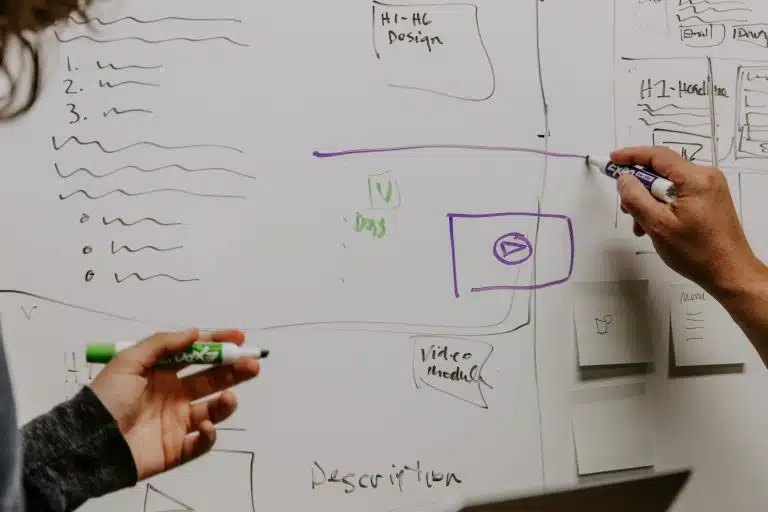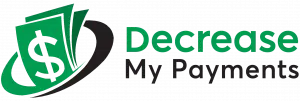Debt consolidation, when approached strategically, holds the power to transform your financial situation from stressful and overwhelming to stable and secure.
By bringing multiple, high-interest debts together into a single, lower-rate loan, consolidation creates the breathing room needed to regain financial footing. Though not a magic trick, with diligent planning and follow through, debt consolidation is a proven tactic for gaining back control of your money and future.
In this guide, we’ll walk through the ins and outs of debt consolidation, from assessing your eligibility to implementing and sustaining an effective plan.
Our goal is to unlock the potential of this often undervalued debt reduction strategy and help readers understand how to leverage consolidation’s benefits to their full advantage.
By the end, you’ll be armed with both the knowledge and confidence required to chart your own clear path to financial wellness. Let’s get started!
The Basics of Debt Consolidation: What You Need to Know
At its core, debt consolidation simplifies a complex web of debts into one singular repayment obligation. Rather than juggling multiple credit cards, medical bills, and personal loans each month, all that debt is consolidated into a single consolidation loan. This new loan pays off the old debts, replacing multiple monthly payments with a single, consolidated payment at a fixed interest rate.
For many, debt consolidation offers a straightforward solution compared to alternatives like bankruptcy that carry harsher consequences. There are no late fees, penalties, liquidation of assets or credit score damage to deal with.
You can consolidate federal student loans as well as unsecured credit card and personal loan debts. Best of all, once consolidated, the average interest rate drops significantly from around 16% to roughly 6-8%, substantially reducing your total repayment costs over time.
However, debt consolidation is not a quick debt elimination tool. Paying off debt still takes discipline, planning and time, just with more breathing room each month. Developing better money habits is essential for long-term success.
Consolidation alone does not address the root causes that led to debt accumulation in the first place either, so behavioral changes are key to avoiding future financial dilemmas. Debt settlement and bankruptcy should only be considered as last resorts when other options have been exhausted.
Evaluating Your Debt: Is Consolidation the Right Choice for You?

Before moving forward, it’s crucial to assess your complete financial situation objectively and determine whether consolidation is a suitable next step. Some important factors include:
– Total unsecured debt levels and monthly payments: Consolidation works best when payments exceed 10-15% of your net monthly income. Below that, the interest rate savings may not outweigh consolidation fees.
– Credit report assessment: You’ll need fair-to-good credit (629 FICO or higher) to access the most competitive rates. Use a debt calculator to assess whether consolidation will actually save you money. Work to resolve any delinquencies or defaults.
– Debt-to-income ratio: Carrying unsecured debt over 50% of your gross monthly income indicates a high risk of default. Get finances stabilized first before consolidating.
– Budget analysis: Consolidation only makes sense if you’ve corrected overspending habits allowing for reduced minimums to accelerate payoff.
– Future goals: Consider consolidation’s potential impact on saving for larger financial objectives like a home down payment within 3-5 years.
Did you pass most of the criteria? Great. If not, tackle problem areas first before pursuing consolidation. Financial advisors are also invaluable resources for impartial reviews of individual circumstances.
Strategies for Effective Debt Consolidation
Once you’ve determined consolidation aligns with your repayment goals and financial reality, it’s time to choose a strategy. The two primary options are:
Personal Loan
A personal loan is a fixed-rate, term loan from a bank, credit union, or online lender used solely for debt consolidation. If you’re specifically dealing with credit card debt, learn how to pay off credit card debt more effectively. Rates average 6-8% and terms 3-5 years. Fast funding allows quick debt payoff, but longer terms mean higher overall costs.
Balance Transfer Credit Card
Opening a new credit card with a 0% intro APR offer of up to 21 months for purchases and balance transfers can achieve interest savings. However, fees of 3-5% still apply. You must pay off the entire balance before promotional rates expire to avoid backdated interest charges.
Additional factors to weigh include whether to consolidate secured loans like auto or mortgages, do it yourself or through a credit counseling agency, and utilize financial software or spreadsheets for planning and tracking progress.
There is no one-size-fits-all method, so evaluate options carefully based on your specific circumstances. Proactive management after consolidation is also key.
Implementing Your Debt Consolidation Plan

With strategy selected, roll up your sleeves and prepare for the fun part – taking action! Consider these tips:
- Gather paperwork like debt statements, income verification, IDs and explain discrepancies honestly with lenders.
- Ask about pre-approval to ensure qualifying rates before hurting your credit with multiple applications.
- Use all available funds like tax returns for a larger down payment to reduce interest costs over time.
- Set up automatic payments to avoid missed or late fees while establishing a payment discipline habit.
- Trim unnecessary expenses from your already tightened budget each month and redirect savings to loans.
- Refinance occasionally as credit improves to secure lower rates, shortening the payoff timeline even further.
- Reward yourself for staying focused, like after paying off a major credit card, with non-cash rewards to keep motivation high.
With the consolidation ball now rolling down the hill, just keep the momentum going. Small, intelligent choices each month bring enormous benefits over the long haul. You’ve got this!
Addressing Debt Consolidation Relief
While consolidation can provide great relief, it’s important to address the underlying causes that led to debt accumulation in the first place. Otherwise, there is a risk of falling back into old spending patterns.
Developing a budget and tracking expenses closely is key. Understanding your relationship with money and why you spend in certain ways can also provide valuable insights.
For many, debt becomes a cycle that feeds on itself through interest charges and late/overlimit fees. Consolidation breaks this cycle by lowering the interest rate and simplifying payments. This frees up resources that would otherwise go towards servicing debt, allowing faster repayment of the principal amount.

Getting control over finances also means controlling impulses. It takes discipline to stick to a budget even when emergencies arise. Building an emergency fund helps prepare for life’s unexpected expenses without resorting to credit. Consolidation provides a steady payment structure to make this possible over time.
Mental well-being should not be overlooked in the journey out of debt. The stress and worry debt causes can negatively impact relationships and self-esteem if left unchecked.
There are online communities and virtual workshops that bring together others working to improve their financial situations – these support networks can boost motivation. Overall financial health relies on making debt consolidation part of a holistic approach to spending and planning.
With the right strategies in place, it becomes a tool that empower people to withstand life’s uncertainties and work towards longer term savings goals with confidence and freedom of choice. The possibilities that open up then inspire continued progress.
Debt Consolidation Strategies
The key is leveraging consolidation as part of a sustainable long-term strategy for taking control of finances through active budgeting and money management habits. Here are other debt management strategies:

– Consolidating multiple types of debt, like credit cards, medical bills and personal loans, into a single loan simplifies account management and payment tracking. This reduces stress by easing the mental and logistical load of juggling multiple payments each month.
– While the goal is to reduce interest costs and become debt-free sooner, consolidation alone may not lower your debt to income ratio or debt to asset ratio enough to meet lender requirements if taking on new credit in the future. Continued progress paying down balances is important.
– Along with the loan, consider signing up for credit counseling. Counselors provide expert guidance tailored to your specific financial situation to help stay on track with the consolidation plan and avoid old spending habits.
– As an alternative to a personal loan, explore balance transfer credit cards. While fees still apply, the intro 0% APR period buys extra time to pay off balances interest-free before regular rates kick in. Just beware of leaving balances uncovered once promotions end.
– All debts will show as closed on credit reports once paid through consolidation. This simplifies credit reports and potentially raises credit scores by lowering credit utilization over time as the combined balance shrinks.
– Building an emergency fund should be a top priority post-consolidation. Even $500 saved acts as a safety net and insurance against relying on expensive credit if unexpected bills arise before the loan is paid off.
– Consider using a debt management software/app to automate payments and easily track loan balances, budgets, spending habits and progress toward becoming debt-free.
– Consolidating student loans can make repayment more manageable by potentially lowering interest rates and extending loan terms. This provides flexibility if facing short-term financial difficulties.
– However, lengthening federal student loan terms through consolidation results in higher total repayment costs due to increased interest charges over time. Only consolidate federal loans if seeking specific benefits like income-driven repayment plans.
– Private student loans without flexible options can still benefit from consolidation into a single payment at a lower interest rate. Just be aware it may impact any grace periods before repayment is due.
– Debt-to-income ratio is a consideration for mortgage approvals. While consolidation reduces ratios by lowering monthly obligations, creditors will still assess overall debt burden relative to income when underwriting home loans.
– Auto and mortgage loans are generally better left untouched due to stricter terms and conditions. But consolidating unsecured consumer debt assists in freeing up funds each month to maintain housing and transportation payments.
– Set realistic debt payoff benchmarks (e.g. eliminating highest interest cards within 12 months) and celebrate small wins to stay motivated. Making consistent progress outweighs following a rigid timeline which can backfire if life complications occur.
– Maintaining budget discipline after becoming debt-free prevents ending up in the same situation. Automate savings and continue growing emergency funds to withstand unexpected expenses without relying on credit gap-fillers.
The overarching point is that consolidation provides a framework for taking control of finances through lower interest obligations and more flexibility. But vigilance is required long-term for true freedom from debt concerns.
Conclusion: Take Back Control of Your Financial Future
Regaining control over your financial circumstances takes commitment, but as we’ve discussed, debt consolidation provides a powerful toolkit to help you arrive at a place of stability and security.
By outlining the ins and outs of this debt relief strategy, our goal has been to help you unlock consolidation’s potential and feel empowered to take the reins of your financial future.
Through diligent planning, open-minded assessments of your unique situation, and consistent follow-through on whichever debt consolidation path is right for you, mountains of debt can be transformed into simple, steady progress towards becoming debt-free.
While challenges may arise along the way, maintaining an optimistic outlook and relying on your intrinsic strengths of discipline, patience and perseverance will carry you through.
If you now feel debt consolidation aligns with your goals but need guidance selecting the optimal approach or implementing an effective plan, don’t hesitate to consult financial advisors. Consider professional debt consolidation services for personalized assistance with your unique financial situation. Their expertise and impartial counsel can help navigate even the most intricate financial circumstances to a positive resolution.

Consult with Your Financial Experts
Are you ready to begin your journey towards financial wellness? I encourage you to take that first step by exploring all that decreasemypayments.com has to offer.
Our team of dedicated professionals provides a full range of debt consolidation services and financial wellness resources tailored specifically to supporting people in your shoes.
Drop by to discuss your unique situation and receive a customized recommendation – you’ve got nothing to lose and everything, including peace of mind, to gain.
The rewards of taking control of your finances through debt consolidation are too great not to pursue. I wish you all the very best moving forward in your journey towards life without debt worries hanging over your head. You’ve got this!









